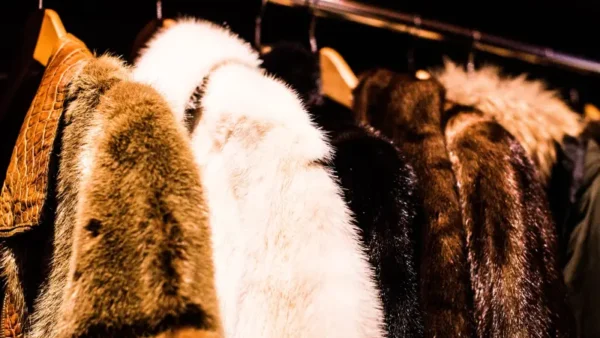Disclosure: This post may contain affiliate links, meaning we get a commission if you decide to make a purchase through our links, at no cost to you. Please read our disclosure for more info.
Last Updated on December 28, 2022 by
The wearing of animal furs as clothing dates back to prehistoric times. It made sense in those days as ancient people needed clothing to keep them warm and protect them from the elements. Animals were everywhere so people learned to make clothing from furs, skins, and hides. Over time, technology and clothes-making developed and started using plant-based textiles such as cotton. Eventually, nylon, rayon, and other synthetic materials were created and there were many more options for making clothing.
Despite this fact, animals skins continued to be used in clothes and furs became fashionable and status symbols. Wearing a mink coat was a sign of success. In some circles, furs are still being used despite the cruelty they pose to animals and the fact that they are unnecessary in the fashion industry.
The Anti-fur Movement
The last decades of the 20th Century saw the beginning and rapid growth of the anti-fur movement. People motivated to protect animals began protesting and running ads using celebrities to promote the idea that using furs is wrong. The movement has been successful as many fashions houses have dropped furs from their lines. Italian designers Dolce & Gabbana have joined that list, phasing out minks, foxes, and other furs from their clothing lines in 2022.
They released a statement, partnering with the animals rights group, Humane Society international. D&G will be offering faux furs created in conjunction with master furriers. To further make their products eco-friendly, the furs will be made from recyclable materials. This is a bold step that places D&G at the forefront of fashion’s participation in protecting animals. Burberry, Prada, and Chanel are other big fashions houses that have joined in on the anti-fur movement.
Animal Rights Beginnings
The philosophy of animal rights has its roots in ancient times. Plato, Abraham Lincoln, Albert Einstein, and Albert Schweitzer all expressed interest and ideas on protecting animals. There was concern over the treatment of animals that were used in labor and the cruelty they sometimes faced. In the mid-19th Century, animal rights activists appeared to protest against animals being vivisected for science.
The 1970s saw the launch of the modern animal rights movement when Peter Singer published the book, “Animal Liberation”. It increased awareness of animal cruelty worldwide and helped lead to the founding of modern animal rights organizations.
Animal Rights Organizations
Over the years, many organizations have been formed with the purpose of advocating for the rights of animals. Some of them include:
- ASPCA – The American Society for the Prevention of Cruelty to Animals was started in the mid-1800s and continues to be a driving force in the animal rights movement today.
- PETA – People for the Ethical Treatment of Animals was formed in 1980 by Ingrid Newkirk and Alex Pacheco, both animal rights activists. PETA boasts about 9 million members worldwide and has led many aggressive and highly successful campaigns against animal testing and the fur industry.
- IAFC – The International Anti-Fur Coalition was founded in 2006 specifically to end the use of animal fur by humans. With a stated goal of shutting down the fur industry in every nation, the IAFC is a non-profit funded by member donations. Like PETA, its campaigns are aggressive and have made headway in this noble endeavor.
The use of animal fur to make clothing is an outdated and cruel practice. It will take a major effort and the combined work of animal rights activists everywhere to end the fur industry. Fortunately, there are dedicated groups with millions of supporters who are making headway. The step of dropping fur from their lines taken by Dolce & Gabbana and other fashion houses is a bold statement that can only accelerate the movement.

